| |
|
|
| |
The 1960s |
|
|
| 1960-63 |
Trevor Manning |
Olympic Gold Medallist – Hockey |
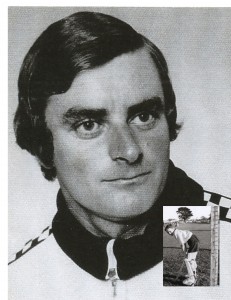 |
Trevor Manning began his hockey career as Hatch Cup rep aged 13 and worked his way up to New Zealand representative. He was in the NZ hockey team to three Olympics 1968 Mexico, 1972 Munich and 1976 Montreal and was goal keeper in the gold medal winning 1976 team. I n the final 13 minutes of the game, Manning saved a goal and had his knee cap shattered – despite his knee hurting he kept playing until the final whistle then realised something was really wrong. It did not stop him getting on the podium to receive his medal which he described as awesome! |
|
| 1961-64 |
Michael Christensen |
Scientist – Mycologist |
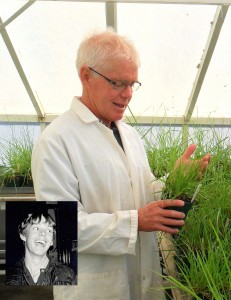 |
Michael is a scientist specializing in fungi and in particular, endophytic fungi that have a unique partnership with important forage grasses that form the backbone of the pastoral farming industry that provides much of the wealth of this country. His career in science as a technical trainee at the Grasslands Division of the DSIR provided him with an apprenticeship-like training during which he was appointed to work in the field of plant pathology and opportunities to learn and to apply his talents with supportive colleagues. He says that a key thing that enhanced his career was joining with a group of young scientists as a lunchtime runner. These achievement-orientated people encouraged him to set a goal of achieving at a high standard in science research. As a result of his work he was promoted from technician to scientist. His work in science has resulted in many publications in international science journals, the highlight being as senior author of a publication in 2008 on the unique manner of growth of the endophytic fungi when in their host grasses. His finding over turned the long-held dogma on how fungi grow and changed peoples’ understanding. This finding was highlighted in Nature Reviews Microbiology and in Science. He was also a part of the world-leading research team of AgResearch that developed procedures to successfully utilize beneficial strains of these fungi to protect host grasses from insect pests and enhance growth and health of grazing livestock. This research has taken him to Japan, China and the USA. Michael is indeed a world expert. |
|
| 1961-65 |
Alun Bollinger MNZM |
Cinematographer |
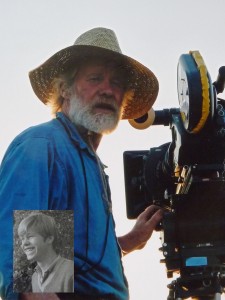 |
Since the 1960s, Alun Bollinger has worked with just about every significant Kiwi director: among them Roger Donaldson, Geoff Murphy, Ian Mune, Gaylene Preston, Vincent Ward, Jane Campion and Peter Jackson. In 1966 Bollinger joined the New Zealand Broadcasting Corporation as a trainee cameraman and, in the following years, developed his craft shooting 16mm news bulletins. In 1977 Bollinger worked as gaffer to Director of Photography Michael Seresin on the Roger Donaldson feature Sleeping Dogs, which is often seen as marking the relaunch point for New Zealand cinema. He went on to shoot several features in quick succession: Middle Age Spread, (1979); Sons for the Return Home (1979); and Beyond Reasonable Doubt (1980). It was with his work on the dark and beautifully crafted Vigil, the first feature from director Vincent Ward, that Bollinger established his distinctive cinematographic style. Alun won awards for his work on End of the Golden Weather and gained international recognition for the filming of Heavenly Creatures. He has resisted the temptation to go and work abroad and has filmed most of our familiar movies, War stories, Forgotten Silver, Goodbye Pork Pie. A documentary about him labelled him as the barefooted camera man. Alun is described as the finest camera man in the world. |
|
| 1954-56 |
Garry Ward MNZM |
Broadcaster |
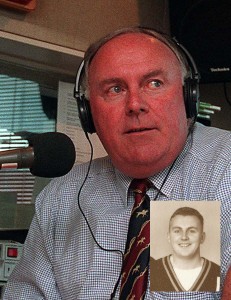 |
Garry spent his working life in Wellington, as the owner operator of several bars, working for Lions Brewerey and for a time the Dominion. He was best known as the host of ZB’s The Great Weekender since 1983. Garry spent 50 years in broadcasting starting with sport in1958 on ZB. Over the years he reported various Olympic and Commonwealth Games for Television New Zealand. Garry chaired the board of New Zealand Sports Hall of Fame and was involved in countless good causes, including setting up the Flagstaff Club. It would be difficult to find a more popular personality. He had friends in every corner of the city, seemed to know everyone, and was a most obliging person. |
|
| 1963-65 |
Peter Davenport PhD, CPEng |
Structural & Civil Engineer |
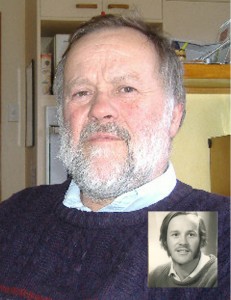 |
In the 1950s Peter immigrated to New Zealand with his parents and his 5 siblings. After completing his PhD at the University of Canterbury, Peter made a career as a Civil and Structural Engineer. Initially he carried out design and construction of buildings then moved to research and teaching. He has developed computer methods to solve complex engineering problems, taught engineering topics at universities and polytechnics, then moved on to research in geohazards, principally earthquakes and their impact on the built environment. In his area of expertise he has published many research papers in Journals and at Conferences Peter has made a significant contribution into research into geohazards with presentations such as Microzoning effects on damage in two large New Zealand earthquakes. |
|
| 1964-67 |
Beverly (Beaver) Morrison |
Singer |
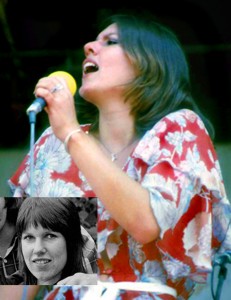 |
Known as Beaver , Beverly was a well known New Zealand singer. In 1971 her talents were discovered by Bruno Lawrence and she joined his band Blerta (Bruno Lawrence Electric Roadshow Travelling Apparition), a musical and theatrical co-operative,which travelled the country playing live gigs for several years, attracting thousands of fans. She later joined similar troupe Red Mole. Beaver was also an actress, starring in Skin Deep and playing alongside Hammond Gamble in Should I be Good. The song Should I be Good or Should I be Evil from the movie in which Gamble and Beaver dueted won film soundtrack of the year in the 1985 Recording Industry Association of New Zealand Awards. Beaver also sang on other Kiwi feature films including Came a Hot Friday and the theme song for the television drama Gloss. Her versatility as a singer, whether it was jazz, blues or rock, was highlighted when she performed at London jazz mecca Ronnie Scott’s. An album Live at Ronnie Scott’s was released, winning jazz recording of the year in 1988. |
|
| 1964-68 |
Keith J. Sainsbury PhD |
Scientist |
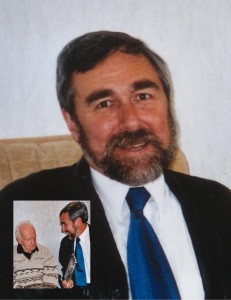 |
Keith gained his PhD from the University of Canterbury in Christchurch and his first job was as a research scientist with MAF. Since 1977 he has worked with the CSIRO in Hobart as senior principal marine research scientist. In 2004 Keith was one of four laureates to receive the 2004 Japan Prize. He is the second New Zealander to receive this prestigious international award. The award, which includes a 50 million yen ($NZ728,000) cash prize, is made by the Science and Technology Foundation of Japan to “deepen the understanding of the role played by science and technology in furthering world peace and prosperity” and the world’s highest accolade for ecological research. He won the Japan Prize for research into food production based on ecosystem concepts. He established for the first time the importance of seabed habitats in determining the productivity of key species. He also demonstrated for the first time the potential impact of seabed trawling in changing the communities. Keith is also chairman of the technical advisory board of the London-based Marine Stewardship Council, which assesses the sustainability of fishery resources and gives an EcoLabel to fisheries that pass – including New Zealand hoki – so consumers can recognise sustainable seafood products. Recently Keith headed a research team to develop and apply the scientific basis for multiple-use planning and management of marine ecosystems in Australia’s exclusive economic zone which resulted in the declaration of large marine protected areas around Macquarie Island and off southern Tasmania. |
|
| 1965-69 |
Jan Apel (Rait) |
New Zealand Disabled Sailor |
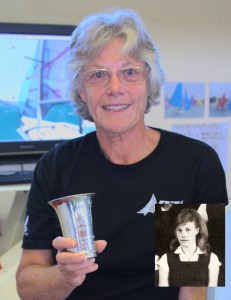 |
When Jan attended WHS she was very involved in sports and won the Sportswoman prize/cup in 1968 and 1969 and was Head Girl in 1969. In 2000 she was diagnosed with a spinal condition that meant severe loss of mobility. A sailing simulator at the Auckland Spinal unit sparked her interest in sailing as she worked to regain strength. Her sailing potential was recognised and she was asked to join the team preparing for the Paralympics sailing a two person paraclass Skud 18 – a sailing skiff. Her sailing partner is helmsman Tim Dempsey. In 2010 Jan sailed in the:
- IFDS World Championships in Netherlands – was 9th in the Skud18 and qualified NZ for the London 2012 Paralympics.
- 2nd at the International Sail Sydney Regatta
- 4th World Cup Series Regatta at Melbourne
In 2011, Jan won the NZ Access Nationals Regatta for Skud18 and was awarded the Kiwi Cup. In addition to sailing, Jan has had success in other sports, most recently she won the 1st Parafed Auckland Regionals (SH1 Prone) in air rifle shooting and in 2009 was 3rd in the NZ Indoor Archery Paralympics Nationals followed by 2nd Parafed Auckland Regionals last year. Jan also finds time to convene or be secretary for five different sporting bodies and received the 2010 Parafed Auckland Award for Outstanding Dedication to Sport.
|
|
| 1968-71 |
Paul Elenio |
Journalist & Businessman |
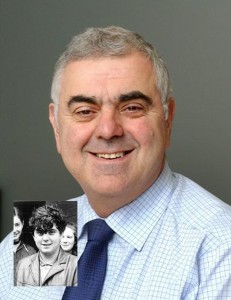 |
Paul began work as a reporter for The Evening Post and after stints as general reporter and on the Parliamentary Press Gallery he became Sports Editor in 1978 and by 1995 was Deputy Editor. With the advent of Wellington Newspapers Ltd/Fairfax Media, Paul moved more into the management side of the business and became Deputy Advertising and Circulation Manager in 1998, and after working as Assistant General Manager, Project Manager Fairfax Media, General Manager The Manawatu Standard he became General Manager of The Dominion Post and Fairfax Central Region in 2005 and holds that position today. Paul was New Zealand representative for the Thomas Jefferson journalism fellowship at the East-West Centre, Honolulu, Hawaii in 1989 and for the David Low Reuters Foundation journalism fellowship at Green College, University of Oxford, England in 1995. Paul is a member of the Newspaper Advertising Bureau sales Board and a current Member of the Advertising Standards Complaints Board. He has written two books: Centrecourt: A History of New Zealand Tennis, and Alle Fine Del Mondo (To the Ends of the Earth) – A history of Italian migration. |
|
| 1962-65 |
Nick Calavrias – ONZM |
Industrialist |
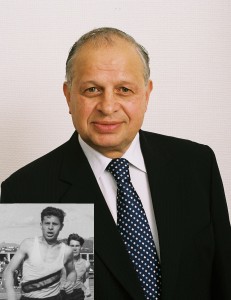 |
Nick began working in a steel distribution company and was appointed to his first manager’s role at 19 and at 27 started Wellington Steel Ltd in 1976. By 1986 the Company had grown substantially through a combination of organic growth, acquisitions and mergers to become Acorn Pacific Corporation Ltd, a public unlisted company that operated on both sides of the Tasman. Steel & Tube acquired Acorn Pacific in August 1990 on the condition that Nick joined the Company as an Executive Director and to undertake the restructuring of the steel distribution operation which accounted for over 60% of group sales revenue. Nick was appointed soon after to the role of Chief Executive Officer of Steel & Tube Holdings Limited in July 1991 with the brief to restructure the Group which at that time included 25% ownership of New Zealand Steel, a motor vehicle importation, assembly and retailing company, mechanical engineering and fabrication, and steel distribution. Under Nick’s leadership, the Company successfully completed a major restructuring programme. This was achieved in a seamless manner and a strong Health & Safety culture was also developed resulting in the company obtaining world class safety results. Having been a CEO and Director of a NZX top 50 public Company for 18 years and running a SME for 14 years prior, Nick has gained significant experience in all aspects of business management and corporate governance. He is now giving some of his time to assist other organisations (large and small) in a non executive director capacity to improve company governance and to help them achieve their strategic, financial and business objectives. |
|